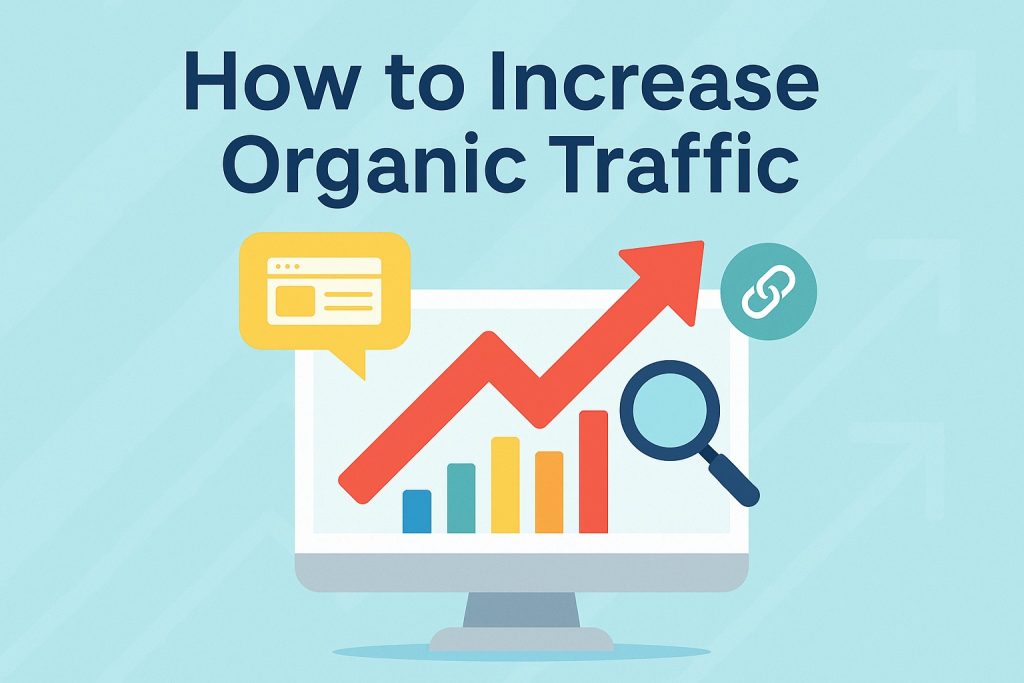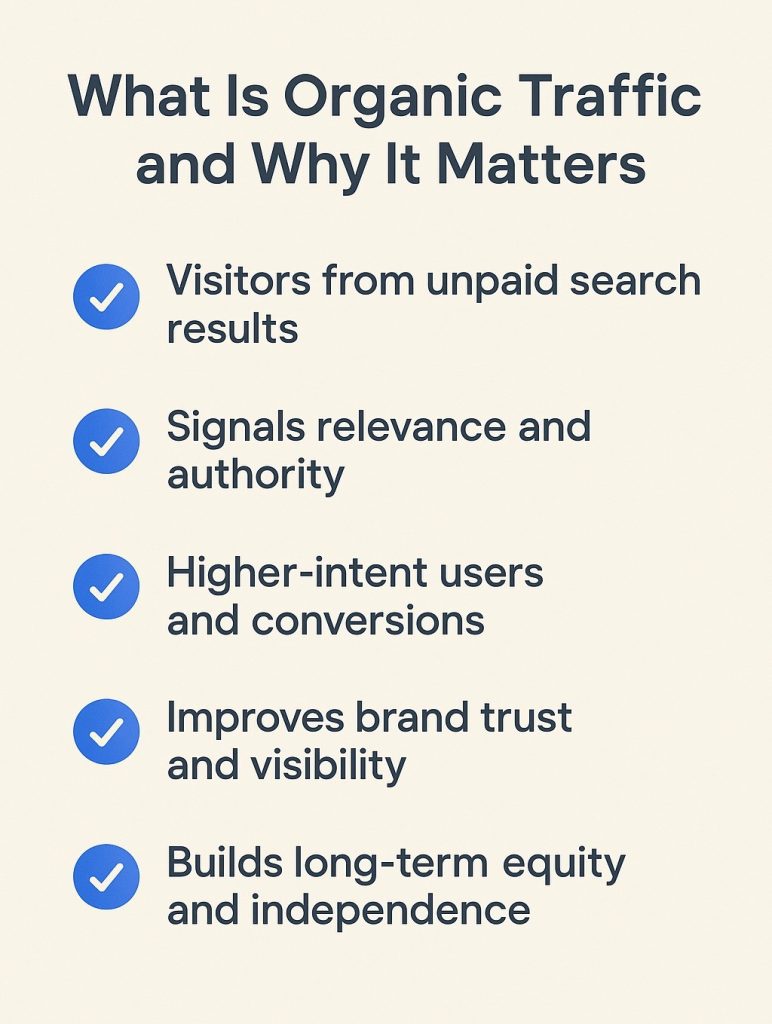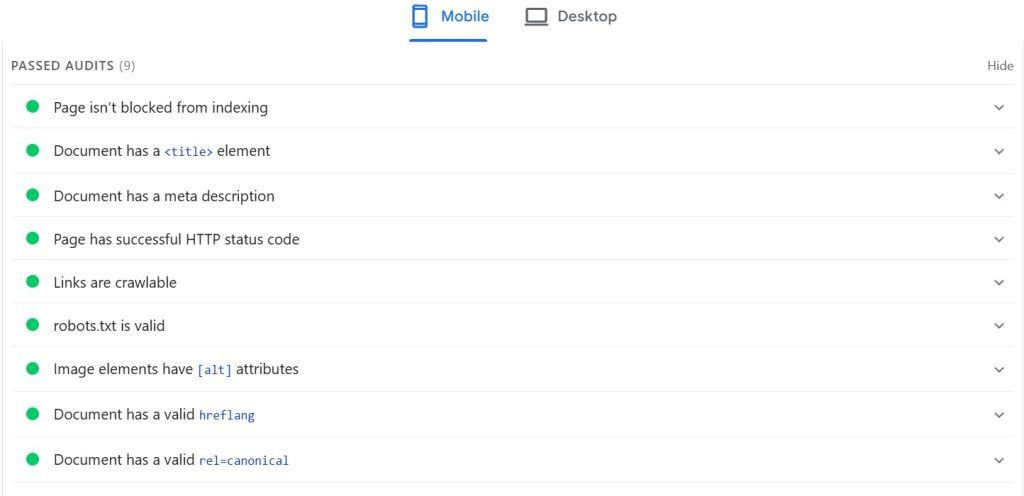Increase Organic traffic is the main goal specially for new websites, and you know what? organic traffic is the backbone of digital business growth. Unlike paid ads that vanish when budgets run out, organic visitors come through trust, quality, and authority. Every click from a search engine means someone intentionally sought what you offer. Increasing organic traffic isn’t just about ranking higher—it’s about building a lasting audience. In this guide, you’ll learn step-by-step research methods to boost your visibility, attract qualified visitors, and dominate search results using smart SEO, powerful content, and modern optimization techniques that work in digital era.

What Is Organic Traffic and Why It Matters
Organic traffic refers to visitors who find your website through unpaid search results. It’s the most sustainable form of growth because it signals relevance and authority. When your pages rank naturally, users perceive your brand as trustworthy. Organic visitors also tend to have higher intent—meaning better engagement and conversions. Strong SEO and valuable content help search engines understand your expertise. Unlike ads, organic visibility compounds over time. The more you optimize your site, the more traffic you attract without paying for each click. That’s why focusing on organic traffic builds long-term brand equity and digital independence.

The Core Foundations of Increasing Organic Traffic
Increasing organic traffic requires a solid foundation that blends strategy, content, and technology. Everything starts with keyword research, followed by creating high-quality, relevant content. Backlinks and internal links build authority, while UX and mobile optimization ensure seamless navigation. Together, these elements make your site search-engine-friendly and user-focused. Successful SEO isn’t a one-time effort—it’s a long-term system where every post, link, and update contributes to growth. Treat your website like a living ecosystem: nurture it regularly, monitor performance, and improve continuously to ensure consistent visibility and engagement.
1. Build Backlinks from Authoritative Sites
Backlinks are still the backbone of Google’s ranking algorithm. They act as trust signals that validate your site’s authority. Focus on earning backlinks from high-authority domains through guest blogging, press mentions, or collaboration with niche partners. Avoid buying links or participating in link farms — these can harm your SEO long term. Create link-worthy assets like research reports, data insights, or infographics that naturally attract citations. The more quality links you earn, the stronger your domain authority becomes — improving your ability to rank for competitive keywords organically.
2. Target Long-Tail Keywords for Easier Wins
Long-tail keywords are specific, lower-competition phrases that drive qualified traffic. Instead of targeting broad terms like “digital marketing,” go for phrases like “digital marketing for plumbers.” These attract visitors with high intent who are ready to engage.

Use tools such as Google Keyword Planner or Semrush to discover long-tail variations your competitors overlook. Incorporate them naturally into headings, meta descriptions, and body text. This approach helps you rank faster, reduces bounce rates, and increases the likelihood of conversion because you’re addressing highly specific user needs.
3. Use Internal Links to Strengthen Authority
Internal linking guides both users and search engines through your website. Strategically connect related articles using descriptive anchor texts. For example, link content about SEO basics to your in-depth guide on Search Engine Optimization to strengthen topical relevance. Internal links also pass link equity between pages, helping under-performing content gain visibility. Tools like Rank Math or Yoast can help manage internal linking effectively. Regularly review your link structure to ensure balance — no orphan pages, no over-linking. Done right, internal linking boosts crawlability, user retention, and ranking consistency.
4. Focus on High-Quality Content Creation
Content is still king — but quality is the crown. Produce search-engine-optimized blog posts that inform, educate, and engage your target audience. Each piece should solve a real problem or answer a specific query. Use clean formatting, relevant sub-headings, and concise language. Optimize for featured snippets by structuring your answers clearly. A helpful resource like Best Digital Marketing Strategies can guide how to merge SEO with content creation effectively. Keep your content fresh by updating facts, visuals, and internal links regularly to maintain its search visibility.
5. Consistently Create Quality Content
Consistency signals credibility. Publishing on a steady schedule helps Google recognize your site as active and authoritative. Plan an editorial calendar aligned with trending keywords and your audience’s needs. Mix formats—how-to guides, case studies, and videos—to keep readers engaged. Avoid quantity for the sake of volume; prioritize substance over frequency. The more consistently you produce valuable, relevant content, the more your organic visibility compounds. Over time, this approach builds topical authority and attracts repeat visitors who trust your brand as a reliable information source.
6. Conduct In-Depth Keyword Research
Effective SEO begins with understanding what your audience searches for. Use keyword tools like Ahrefs or Ubersuggest to uncover relevant terms with strong search intent. Segment your keywords into informational, navigational, and transactional categories. Incorporate them naturally in titles, introductions, and sub-headings. Align your keywords with your long-term business goals — for instance, connecting “SEO growth for local businesses” with your service pages. Regular keyword audits reveal new ranking opportunities and underperforming pages that can be optimized for higher reach and engagement.
7. Add Video Content to Improve Engagement
Videos capture attention and increase dwell time — two key SEO performance metrics. Create short explainer videos, tutorials, or product demos that complement your written content. Host them on YouTube and embed them into your website for added visibility. Include transcripts to help search engines index your video content properly. Engaging video content not only keeps visitors on your page longer but also builds brand recognition faster. Combined with visuals and infographics, video marketing can transform your organic reach and make your content more shareable across platforms.
8. Blog Regularly to Maintain Freshness
Blogging regularly keeps your site active and relevant. Aim to publish at least 2–4 times a month, focusing on topics that answer user queries or align with seasonal trends. Regular blogs also create opportunities for interlinking and keyword coverage expansion. Combine evergreen content with timely posts that address new developments or emerging technologies. For example, you might explore “AI’s impact on content marketing” or “How mobile SEO influences conversions.” Frequent blogging not only attracts new visitors but also gives existing ones a reason to return.
9. Implement Schema Markup for Rich Results
Schema markup improves how your content appears in search results by enabling rich snippets like ratings, FAQs, and reviews. This helps increase click-through rates and credibility. Implement structured data in JSON-LD format using tools like Google’s Structured Data Markup Helper. Common types include Article, FAQ, Product, and Local Business schema. Pair schema with Technical SEO enhancements—such as site speed, XML sitemaps, and proper indexing—to ensure Google understands your content structure clearly. These optimizations make your listings visually appealing and improve ranking potential in competitive SERPs.
10. Partner with Influencers to Expand Reach
Influencer collaborations amplify your brand’s credibility and drive organic engagement. Partner with micro-influencers in your niche who have authentic connections with their audience. They can promote your content or products through reviews, mentions, and backlinks. This not only builds trust but also attracts referral traffic. Choose influencers whose values align with your brand message. For example, a sustainability brand can collaborate with eco-focused content creators for targeted reach. Influencer marketing also supports Build Brand Awareness Campaigns by combining community engagement with measurable SEO benefits.
11. Optimize for Mobile Devices
Mobile optimization is essential since most users now search from smartphones. Ensure your website loads quickly, images are compressed, and buttons are easy to tap. A mobile-responsive design improves both user experience and ranking. Use Google’s Mobile-Friendly Test to evaluate performance. Prioritize fast load times through techniques like lazy loading and caching. When users enjoy seamless browsing on mobile, they stay longer — reducing bounce rates and signaling value to Google. Optimizing for mobile isn’t just about convenience; it’s a critical factor for overall SEO success.

12. Publish Guest Posts for Broader Exposure
Guest posting is a powerful link-building and brand-building strategy. Writing for reputable sites exposes your expertise to wider audiences while earning backlinks to your own content. Focus on high-quality blogs within your industry. Provide unique insights, data, or original research to increase acceptance rates. When done strategically, guest posts drive referral traffic and enhance authority. Ensure your author bio includes a relevant link to your most valuable page or resource. Over time, consistent guest posting establishes your brand as a trusted voice in your niche.
13. Refresh Existing Content to Stay Competitive
Old content can lose ranking power over time. Regularly review your top-performing articles and update them with new statistics, visuals, and internal links. Replace outdated references and optimize for current search intent. Adding sections on trending topics keeps content fresh and relevant. Google prioritizes updated information because it enhances user satisfaction. Refreshing content also gives you an opportunity to add more long-tail keywords, improving traffic diversity. Treat your website like a living document—regular updates show both readers and search engines that your brand remains active and reliable.
14. Research Competitors and Analyze Keyword Gaps
Competitor analysis uncovers new opportunities for growth. Identify which topics and keywords your competitors rank for but you don’t. Study their backlink sources, content structure, and engagement strategies. Tools like Ahrefs and Moz can help identify keyword gaps and ranking potential. Once discovered, create superior content that fills those gaps with richer insights and better readability. Understanding your competitors’ strengths allows you to differentiate strategically and capture a share of their audience. Continuous analysis ensures your SEO strategy stays relevant and competitive.
15. Monitor Engagement Metrics and Improve UX
SEO is not only about keywords — it’s about people. Track performance metrics such as bounce rate, time on page, and scroll depth to understand engagement. Poor UX leads to lower rankings, while seamless experiences encourage return visits. Optimize navigation, font readability, and page load speed. Incorporate CTAs strategically without overwhelming users. For deeper guidance, review Technical SEO best practices to enhance usability and accessibility. Great UX keeps users on your site longer, signaling to search engines that your content is worth ranking higher.
Combine SEO and Strategy for Sustainable Growth
Increasing organic traffic requires a balanced mix of technical optimization, creative content, and strategic promotion. By combining the power of backlinks, schema markup, influencer outreach, and mobile optimization, you’ll build both authority and trust. Regularly refresh old content, monitor analytics, and keep pace with emerging SEO trends. For deeper strategic insights, explore Best Proven Content Marketing Strategies to align your SEO efforts with long-term business growth. Remember — SEO isn’t a one-time effort; it’s a continuous process that rewards consistency, authenticity, and innovation.


